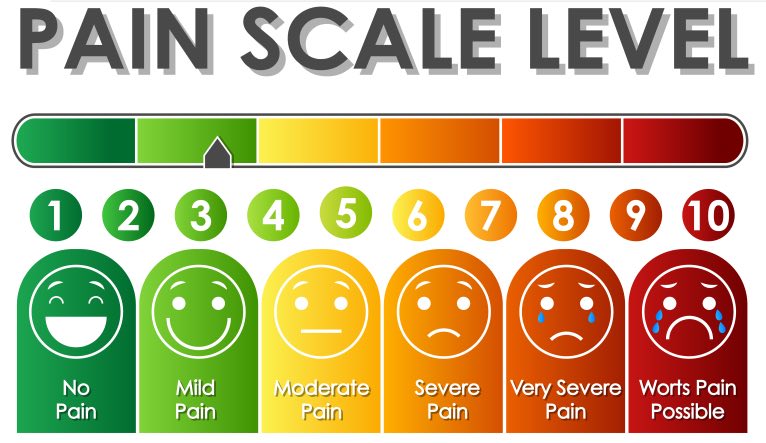Almost everyone has experienced pain at some point in their lives. Pain is a very real physical, emotional, or financial part of life. And as a business owner, you can use your prospects’ pain points to your advantage. You can pass your message more effectively by leveraging pain advertising and increasing sales. So what is pain advertising, and how can you use it to your advantage? Keep reading to find out!
What is Pain Advertising?
It is a marketing strategy that emphasizes the pain points of your target audience to get their attention. You can speak directly to them about the problem they are facing and how your product or service can help solve it.
To succeed with this type of advertising, you must first identify your target audience’s pain points. Once you know this, you can create ad copy and visuals focusing on those problems. The pain management in advertising should be clear and direct so that your audience knows exactly what you are offering and how it can help them.
When done correctly, pain advertising can be an effective way to reach your target audience and get them to take notice of your product or service. However, it is important to use this strategy sparingly and only when you are confident that you can deliver on your promises. Otherwise, you risk damaging your brand’s reputation.
What Are the Types of Pain Points?
There are four main types of pain points that companies address with their marketing:
Functional
Functional pain points are the most basic and superficial type of pain point. They’re typically easy to solve and don’t require much thought or consideration from the customer. For example, a company might advertise its product as being “dishwasher safe” to address the functional pain point of having to wash dishes by hand. Any type of pain that can be solved with a quick Google search would be classified as a functional pain point.
Emotional
The emotional pain point is a little more complicated than the functional one. Emotional pain points are usually caused by insecurity, anxiety, or inadequacy. They often manifest as wanting to be accepted, feel included, or feel loved. Like functional pain points, everyone experiences emotional pain points, but some people are more in touch with them than others.
If you can identify and tap into your prospects’ emotional pain points, you’ll be able to create a much more powerful message that resonates on a deeper level. After all, we’re not rational creatures; we’re emotional creatures that make rational decisions.
For example, let’s say you’re selling a new type of toothbrush clinically proven more effective at preventing cavities than any other one on the market. A functional pain point would be the fear of getting cavities; an emotional pain point would be the fear of being judged by others for having cavities.
Do you want to use pain advertising to your advantage?
Contact Growth Hackers
Social
Social pain points are similar to emotional pain points in those feelings of insecurity or anxiety cause them. However, social pain points specifically relate to our fear of being judged by others. They can be triggered by anything from wanting to be accepted by our peers to worrying about what other people think of us.
Companies often use social proof to address social pain points. Social proof is the idea that we’re more likely to do something if we see other people doing it. For example, a company might use testimonials from satisfied customers to show that its product is popular and effective.
Physical
Physical pain points are the most concrete and tangible type of pain point. They’re caused by physical discomforts, such as hunger, thirst, or fatigue. Physical pain points are usually the easiest to identify because they’re the most obvious.
A company might address a physical pain point by advertising its product as “thirst quenching” or “energy boosting.” If a product can relieve a physical pain point, it’s likely to be successful.
When it comes to advertising, it’s important to consider the pain points your target audience is experiencing. By addressing these pain points in your ad campaigns, you’ll be able to create more effective and persuasive ads that resonate with your audience on a deeper level.
Common Advertising Pain Points and How to Overcome Them
There’s no question that advertising can be painful. From the high cost of entry to the sheer competition, it’s easy to get discouraged.
However, pain points don’t have to be a death sentence for your campaigns. Understanding and addressing them can be the key to success.
Here are some of the common advertising pain points and how to overcome them:
The high cost of entry
One of the advertisers’ biggest pain points is the high entry cost. Advertising can be expensive, and it’s not always easy to justify the investment.
However, there are ways to overcome this obstacle. One is to focus on ROI-driven campaigns. By measuring the results of your campaigns and making adjustments accordingly, you can ensure that your investment is paying off.
Another way to overcome the high cost of entry is to get creative with your budget. There are several ways to stretch your advertising budget further, such as targeting specific demographics or using less expensive platforms.
The sheer amount of competition
Another pain point for advertisers is the sheer amount of competition. With so many companies vying for attention, it can be difficult to stand out.
To overcome this, it’s important to focus on creating unique and compelling ad campaigns. This means thinking outside the box and creating creative ways to communicate your message. It also means experimenting until you find what works best for your company.
The ever-changing landscape
The advertising landscape is constantly changing, which can be a pain point for advertisers trying to keep up. New platforms, technologies, and trends can make it difficult to stay ahead of the curve.
It’s important to be proactive and to keep your finger on the pulse of the latest industry developments. This means staying up to date with the latest news and trends and being willing to experiment with new platforms and technologies.
The need for constant optimization
Another pain point for advertisers is the need for constant optimization. To be successful, you need to continually tweak and adjust your campaigns. This can be a time-consuming and frustrating process.
Focusing on making small changes that can have a big impact is crucial. This means testing different elements of your campaigns and making adjustments based on the results. It also means letting go of what’s not working and moving on to something new.
What Are the Benefits of Pain Advertising?
Helps you understand your target market better
To create an effective pain ad, you need to understand your target market and their specific pain points. This will help you create a more targeted and personalized ad campaign that resonates with them deeper. In pain management marketing your ultimate goal is to create ads that speak to your target market’s needs and wants. If you can do this effectively, you’ll be well on your way to driving significant results
A more effective way to communicate your message
When you tap into your target market’s pain points, you can communicate your message in a much more effective way. Instead of just talking about your product or service, you can show your prospects how your offering can help them overcome their specific challenges. This type of advertising allows you to get under the skin of what your target market deals with daily. Any pain point that you can alleviate will help your prospects see the value in what you’re offering.
Helps you stand out from the competition / Keeps you ahead of the competition
In today’s competitive marketplace, finding ways to stand out from the crowd is more important than ever. By leveraging your target market’s pain points, you’ll be able to create ads that are unique and differentiated. This will help you attract attention and stand out from the sea of sameness your prospects are bombarded with daily. As the traditional marketing strategies become less and less effective, pain advertising provides a powerful alternative that can help you reach your target market and achieve your business goals.
You can also use pain advertising to stay ahead of the competition. By constantly identifying and targeting new pain points, you’ll be able to stay one step ahead of your competitors. They’ll play catch-up while you’re reaping the benefits of being in front of the curve. In a rapidly changing world, this is an invaluable advantage. The customer pain points you identify today may differ from those of tomorrow, so it’s important to keep your finger on the pulse.
Increased response rates and conversions
When you create ads that speak to your target market’s pain points, you’ll see an increase in response rates and conversions. This is because you’re addressing a specific need that your prospects have and providing a solution that can help them overcome their challenges. By creating ads that are relevant and useful, you’ll be able to connect with your target market on a deeper level and generate results that are tangible and measurable. In paid search ad campaigns, using pain points can be an effective way to improve your ad performance and ROI.
It’s time to increase your sales by using pain advertising today!
Build a stronger relationship with your target audience
When you create ads that focus on your target market’s pain points, you’re building a relationship of trust and credibility. You’re showing them that you understand their challenges and have a solution to help them overcome their pain points. This type of relationship-building is essential in today’s competitive marketplace. Like any relationship, it takes time to build trust and credibility, but it’s worth the investment. In the search engine optimization (SEO) world, we often talk about the idea of “earning” your target market’s trust. The same is true for pain advertising. You have to earn your target market’s trust by showing them that you understand their challenges and that you have a solution that can help them overcome their pain points.
Boosts your bottom line
By definition, pain advertising is a form of targeted marketing. You’re laser-focused on a specific group of people experiencing a specific problem. This allows you to create more relevant ads for your target market, leading to higher click-through rates (CTRs) and lower cost-per-click (CPCs). In other words, pain advertising can get more bang for your buck. In reputation management, for example, you can use pain advertising to target individuals who have recently been victims of negative online reviews. You can create ads tailored to their needs, boosting your bottom line. As the expected click-through rate (CTR) for online ads continues to decline, pain advertising provides a much-needed boost to your bottom line.
It’s a win-win for customers and businesses
If your business can solve a customer’s pain point, it’s a win-win situation. The customer gets relief from their problem, and your business gets a satisfied customer. In some cases, you may even be able to upsell or cross-sell customers by offering them additional products or services that can help alleviate their pain points. Different marketing campaigns can be used to target different types of pain points. For example, if a customer is experiencing pain because they’re using an outdated product, you could run a campaign that promotes your newer, updated product. Similarly, if your products are particularly well-suited to solving a specific pain point, you could create a targeted pain point campaign to let customers know.
Saves you time and money in the long run
Pain advertising can also save you time and money in the long run. By understanding what your customers are struggling with and addressing their needs in your ad, you can create a more targeted campaign that doesn’t require as much guesswork. This can help you save on advertising costs and get better campaign results. Any blog post, whitepaper, or other content you create to support your pain advertising efforts should be laser-focused on solving a specific problem for your target customer.
Creates a more human connection
Another benefit of pain advertising is that it can help create a more human connection with your audience. Rather than just trying to sell them a product or service, you’re showing that you understand their pain points and want to help them overcome them. This can make your brand more relatable, translating into better customer loyalty and higher conversion rates.
Pain advertising can be an incredibly effective way to reach your target audience and achieve your marketing goals. By understanding your customers’ pain points and addressing them in your ads, you can create a more targeted and human campaign that can save you time and money in the long run. If you’re unsure where to start, consider hiring a copywriter or marketing agency specializing in pain advertising to help you create a campaign that resonates with your audience.
Final Words on Pain Advertising
Pain advertising is a powerful marketing technique that can help you tap into your prospects’ deepest needs and desires. By understanding the different types of pain points, you’ll be able to create ads that resonate on a deeper level and drive more conversions. So don’t be afraid to leverage your prospects’ pain points in your marketing; it could be the difference between successful and unsuccessful campaigns.
Growth Hackers is among the best customer acquisition agencies helping businesses from all over the world grow. There is no fluff with Growth Hackers. We help entrepreneurs and business owners use pain advertising, generate qualified leads, optimize their conversion rate, gather and analyze data analytics, acquire and retain users and increase sales. We go further than brand awareness and exposure. We make sure that the strategies we implement move the needle so your business grow, strive and succeed. If you too want your business to reach new heights, contact Growth Hackers today so we can discuss about your brand and create a custom growth plan for you. You’re just one click away to skyrocket your business.









